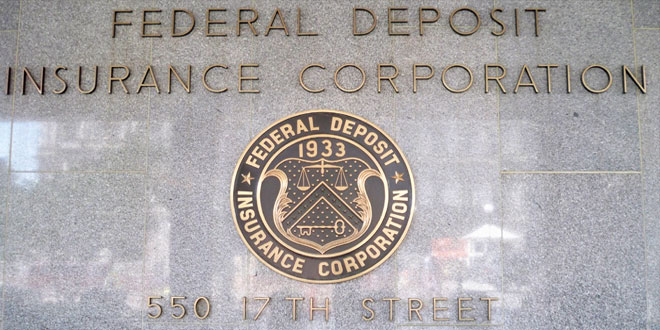Statement of Tom Hoenig, FDIC Vice Chairman on the action by the Senate Banking Committee moving S. 2155 to the full Senate.
I am pleased that the Senate Banking Committee has advanced the regulatory relief debate with approval of S. 2155, the Economic Growth, Regulatory Relief and Consumer Protection Act. The underlying goal of the legislation is one I have long advocated: easing the burden for the banks that pose less risk and cost to the financial safety net and ultimately to the taxpayer while enabling stronger economic growth.
To that end, S. 2155 incorporates for banks with less than $10 billion in total assets several relief provisions I support, including a simpler leverage ratio of tangible equity to assets as the primary measure of capital adequacy. Other relief for small banks includes minimum standards for residential mortgage loans, appraisal relief in rural areas, simplifying call reports, and extending the examination cycle. These are significant improvements in the regulatory cost and landscape for these commercial banks.
The bill also raises the asset threshold for applying enhanced prudential standards to banks from $50 billion to $250 billion. In considering the matter of thresholds, Congress might require instead that regulatory mandates be defined around bank activity rather than strictly asset size. Raising the asset threshold to $250 billion would have the effect of immediately isolating a handful of non G-SIB regional banks and forcing them to abandon their commercial bank model with a focus on lending, toward the more leveraged universal bank model with its emphasis on trading, investment banking and broker-dealer activities. Further, this approach creates a significant barrier to growth for non G-SIB commercial banks in general, and especially for those approaching the threshold limit. It also would encourage further consolidation among these commercial banks to achieve the scale needed to spread the costs of the enhanced prudential requirements. Consequently, the sum total of all of these effects would negatively impact competition and commercial credit availability to Main Street.
Rather than size thresholds, banks that are not G-SIBs and that have trading assets and trading liabilities of no greater than 10 percent of total assets could be exempted from enhanced prudential standards if they hold tangible equity to assets of between 8 and 10 percent. Where necessary the banking agencies could act jointly to determine if any such bank poses systemic risk concerns. Currently, 93% of U.S. banks that are not G-SIBs (or an affiliate) have less than 10% of their assets in a trading account and also have an 8% tangible equity to assets ratio.
A look at the financial footprint of the largest bank holding companies in the United States illustrates why this approach merits serious consideration. As the chart below shows, the institutions with the largest footprints are significantly engaged in activities such as custody and safekeeping and/or have significant trading and derivative liability exposure, including a significant amount of sold protection through credit default swaps. The chart shows the sharp cliff effect separating the remaining institutions with dramatically smaller financial footprints. These institutions — commercial banks — do not have significant exposure outside of their on balance sheet assets that are generally comprised of commercial and retail loans funded by deposits.
The bill also addresses elements of the Volcker Rule. It provides a blanket exemption from compliance with the Volcker Rule for banks with less than $10 billion of assets that also have less than 5% in total trading assets and trading liabilities. There may be an alternative way to simplify the Volcker Rule and provide regulatory relief for banks that are not prop traders without opening a loophole that would invite abuse of the safety net in the future. Congress could require the regulatory authorities to presume compliance and establish a safe harbor for certain derivatives transactions, such as those that are entered into in conjunction with a loan or for hedge accounting purposes. Additionally, to address competitive inequities Congress could allow for non G-SIB commercial banks, within defined capital limits, to own venture capital funds to help promote small business and local economies. Broadly if further changes are contemplated for the rule, it is imperative that the CEO attestation be preserved to assure that the largest banks maintain a reasonably designed compliance program for the identification of any speculative activity.
Finally, the provision that would exclude central bank reserves from the calculation of the supplemental leverage ratio for custodial banks poses costs to the public that should be taken into consideration as this legislation is further debated. Custodial bank activities are highly commingled with the insured commercial bank activities. While these activities might not pose major credit risk they do carry significant operational and other risks, and make up a large portion of the financial footprint as depicted in the chart below. Such risk should be funded with investor capital not a taxpayer backstop. The usefulness of a leverage ratio stems from the fact that it does not discern among losses that flow from credits, operations, or any other risks regardless of whether they are captured in the risk-weighted measure, and its integrity should not be compromised. Also, if the overall risk is less for these banks than other banks, their cost of capital should also be less and reflected in a lower return on equity.
 Oklahoma Bankers Association We make bankers better!
Oklahoma Bankers Association We make bankers better!

